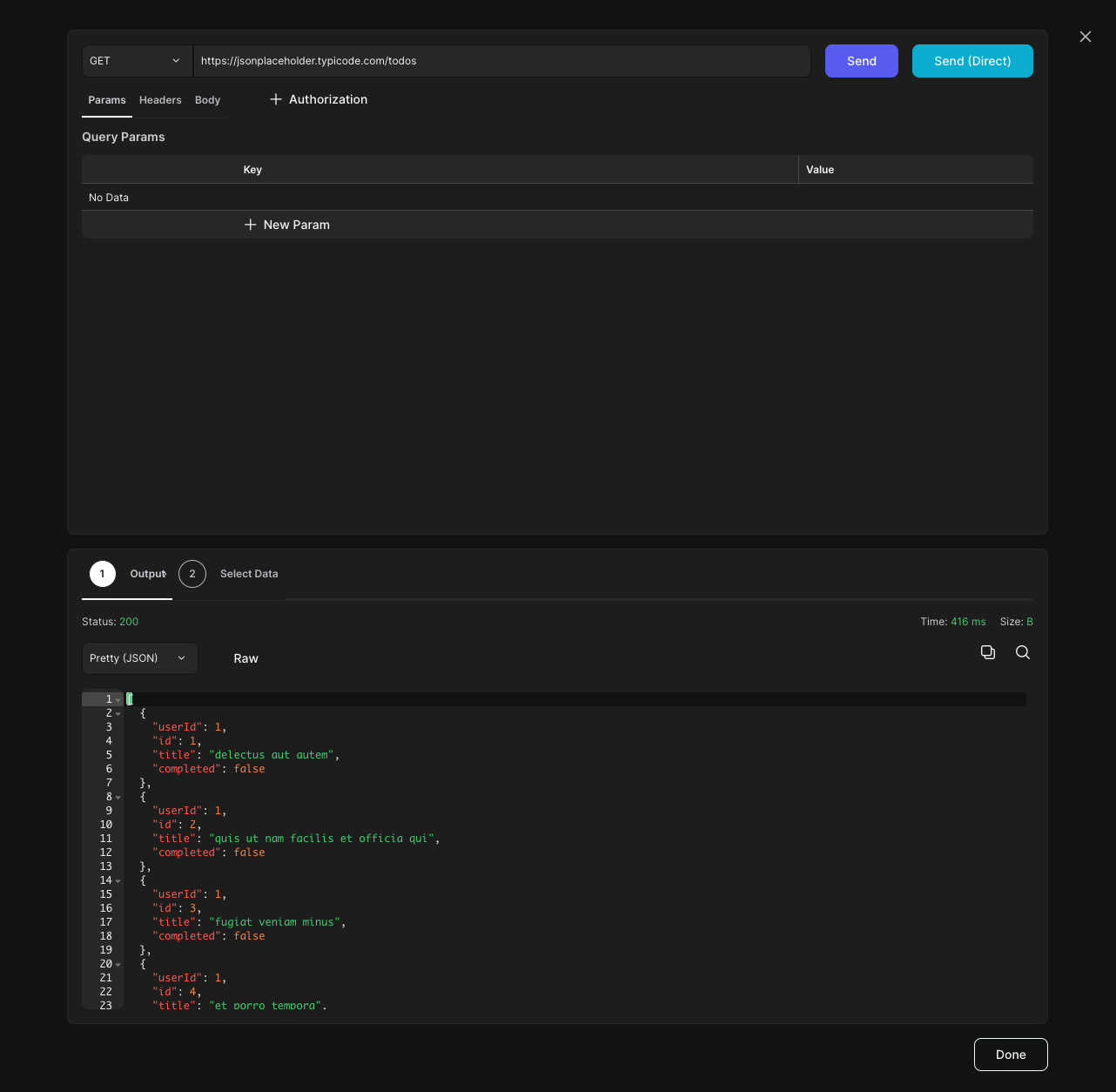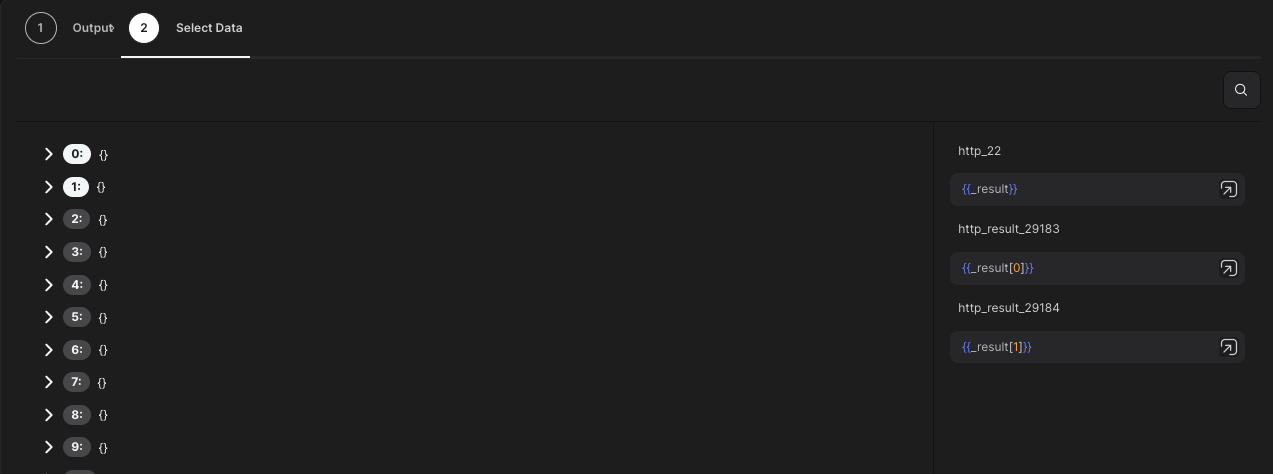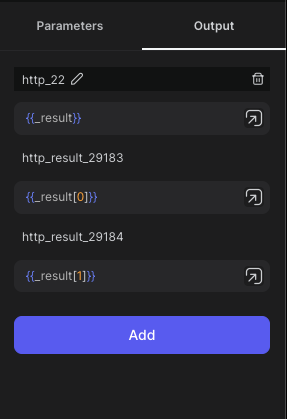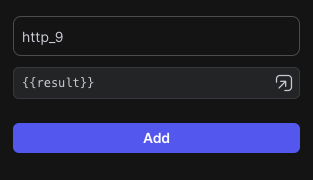
What is the HTTP Request Node?
The HTTP Request node is a powerful feature in Peaka that allows you to send HTTP requests to external APIs or services and retrieve data. It supports various HTTP methods such as GET, POST, PUT, PATCH, and DELETE, and provides options for configuring request parameters, headers, request body, and authorization.Using the HTTP Request Node
To use the HTTP Request node effectively, follow these steps:- Insert an “HTTP Request” node into your workflow.
- Configure the details of the HTTP request by specifying the HTTP method, URL, request parameters, headers, request body, and authorization settings.
- After configuring the request, you can click on the “Send” button to initiate the request. The result of the request will be displayed, showing the response data.


- If you want to extract specific data from the response, you can use the “Select Data” tab in the modal. This allows you to choose which data elements to capture. Variables will be created for the selected data, which you can view on the right side of the “Select Data” tab.

- You can access the results of the HTTP request by using the variables created for the response data in your project.
